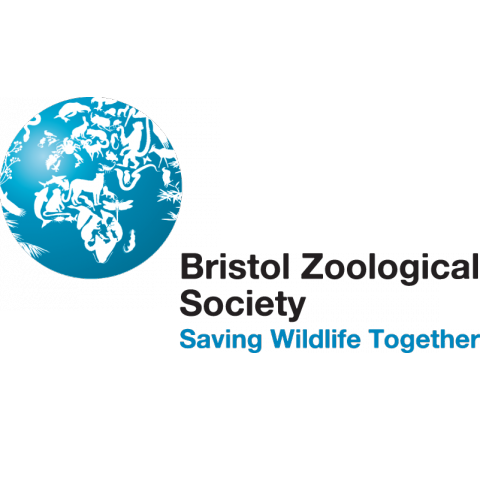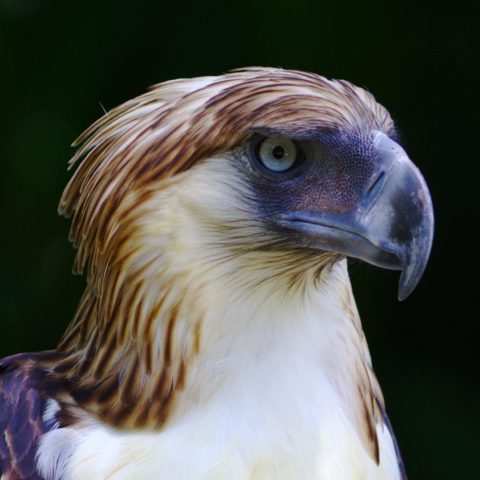Conservation Actions
Conservation Actions UnderwayRecent records come from Northwest Panay Peninsula Natural Park (concentrated around the Sibaliw station run by an NGO) Mt Canlaon Natural Park, and in the Calinawan Community-based wildlife sanctuary on Negros (A. Bucol in litt. 2007; D. Kerhoas and E. Curio in litt. 2020). Local reports also derive from the North Negros Forest Reserve, and the Mt Talinis/Twin Lakes on Negros (A. Bucol in litt. 2007). In the mid-1990s, the species featured on a bilingual environmental awareness poster as part of the "Only in the Philippines" series, and also featured in a public awareness caravan through Negros in November 2005-November 2006 (Cariño et al. 2007). Bristol Zoological Society has implemented a wide number of conservation actions, namely surveys in South Negros (2014-2017), North Negros (2018-2020) and an exhaustive survey of Northwest Panay Peninsula Natural Park (from 2018; Kerhoas et al. 2019; Mynott et al. 2020), as well as supporting captive breeding centers and promoting alternative livelihood projects. It was used also as main logo in a photo exhibit "Wet and Wild" held at the Provincial Convention Center, Oriental Negros in November 2007 (A. Bucol in litt. 2007). It has been studied as part of the Philippine Endemic Species Project (PhilConserve) (Slade et al. 2005). The North Negros Forest Natural Park was declared by Presidential Decree in 2006. Efforts are ongoing to strengthen protected area management and involve the Negros Forests and Ecological Foundation, Inc. (NFEFI) and Silliman University - Angelo King Center for Research and Environmental Management (SUAKCREM) as well as other existing local non-governmental organisations and people's organisations in the protection of the species. It was bred for the first time in captivity in 2007 at the Center for Tropical Conservation Studies, Philippines (H. Roberts in litt. 2009), and a small number of captive individuals have been bred since 2007 (Hirschfeld 2008). As of 2020, the captive population totals 88 individuals (L.-J. Cerial and F. Gutierrez per D. Kerhoas and E. Curio in litt. 2020), which come from three founder birds confiscated in 1999 and 2006 from the illegal bird trade (Justo 2013; N. Simpson per D. Kerhoas and E. Curio in litt. 2020). Captive breeding is being undertaken by the Talarak Foundation Incorporated and the Center for Research and Environmental Management (hosted by the Silliman University), and there are plans for future re-introductions (P. Hospodarsky in litt. 2010; F. Gutierrez per D. Kerhoas and E. Curio in litt. 2020). A Conservation Action Plan workshop occurred in 2019 to discuss the creation of a protected Natural Park in the North of the Central Panay Mountain Range (which holds some of the last remaining lowland, dense canopy forest within the species's range); further work is however required until complete implementation (D. Kerhoas and E. Curio in litt. 2020).
Conservation Actions Proposed
Conduct fieldwork in all areas from which the species has been locally reported and all other sites where suitable habitat remains, including the Bulabong Puti-an National Park. Provide immediate effective protection for the North Negros Forest Reserve. Encourage careful reforestation activities around remaining forests and law enforcement to reduce illegal logging. Utilise education and awareness campaigns to aid the conservation of this species, including encouraging people not to hunt the species and to aid the regeneration of food plants (Cariño et al. 2007).
Location Information
Gallicolumba keayi is endemic to the Philippines, where it occurs on Panay and Negros (Collar et al. 1999). On Panay it has been observed regularly in the Northwest Panay Peninsula Natural Park in recent years (camera trap footage and observations; Kerhoas et al. 2019) including breeding records (Slade et al. 2005). On Negros, it was fairly common in the 19th century, but had become extremely rare by the 1930s. Despite the possibility that the species may have been extinct in northern Negros (J. Hornbuckle in litt. 2005; P. Hospodarsky in litt. 2010), since 2010, it has been observed across this range, including sightings at Mount Kanlaon and Twin Lakes (which were observations only and some unconfirmed local reports; D. Kerhoas and E. Curio in litt. 2020). Previously, research has also identified a few small populations in southern Negros (Cariño et al. 2007), with only a few sightings in recent years (eBird 2020). It seems unlikely that more than a few hundred individuals remain on each island, although as Panay retains more forest cover, it is likely that this population is larger (P. Hospodarsky in litt. 2010).Geographic Range
Extant
Philippines
Population Information
The population is estimated to number 50-249 mature individuals, based on the assessment by BirdLife International (2001) that it "seems unlikely that there are more than a few hundred individuals... on each island [Panay and Negros], and there may only be a few tens". This estimate equates to 75-374 individuals in total, rounded here to 70-400 individuals.Threats
Primary forests have been almost totally destroyed on Negros (where just 4% of any type of forest cover remained in 1988) and Panay (where 8% remained). Habitat degradation, through clearance for agriculture, residential encroachment, timber and charcoal-burning, continues to pose a serious threat to remaining fragments. Secondary forest appears to be unsuitable for the species; it is not found in one of the only remaining areas of secondary forest on Negros (Baptista et al. 2020). Although forest loss alone may have slowed in recent years, trapping and hunting for food and, presumably, for the cage-bird trade constitute other threats. In 2005, five birds were killed by poachers in Negros (J. Hornbuckle in litt. 2005). A number of nests have been depredated, although it is unknown whether this is by native or introduced predators.Partners
IUCN Red List Account Link
Please click here to see the species' IUCN Red List Account page.Photo Credits
Jon Hornbuckle
Featured image: PG Jakosalem/PhilBio










